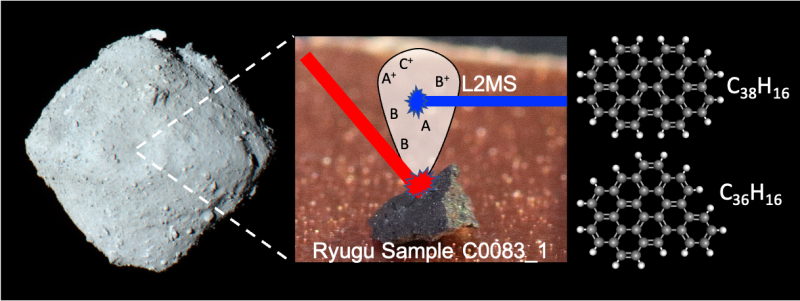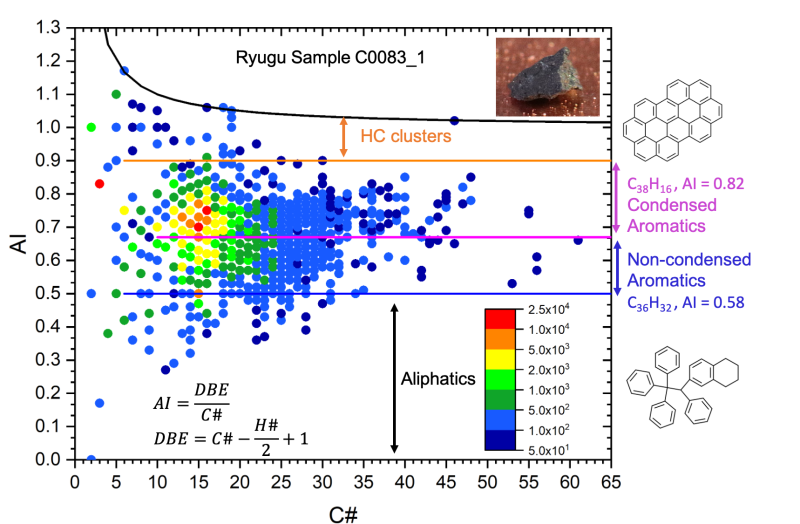Large interstellar polycyclic aromatic molecules discovered in asteroid Ryugu
Polycyclic aromatic hydrocarbons (PAHs) play an important role in the physics and chemistry of star- and planet-forming regions. Several formation sites have been proposed for these PAHs: in the envelopes of carbonaceous stars at the end of their lives, and in the interfaces of interstellar clouds irradiated by ultraviolet photons from stars. It is precisely in these interfaces that the infrared emission of these PAHs is observed by space observatories, such as the James Webb Telescope. The current consensus is that emitting PAHs are large (composed of 50 or more carbon atoms). To date, laboratory analysis of primitive materials such as carbonaceous chondrites has made it possible to study different types of stardust, but no large PAHs have been identified.
The first direct detection of these species has just been achieved in grains from the carbonaceous asteroid Ryugu (JAXA Hayabusa2 mission). The study, carried out by scientists from CNRS Terre & Univers, uses a unique surface mass spectrometry technique based on two-stage laser desorption/ionization, which is available on the AROMA device at IRAP. This method has enabled highly sensitive detection of free aromatic species present on the surface of Ryugu grain powders containing up to 61 carbon atoms.

Among the large aromatic species detected are condensed species typical of soot chemistry. These species are good candidates to account for the aromatic emission bands observed by the James Webb Space Telescope. Other aromatic species detected are rich in aliphatic bonds characteristic of non-condensed structures. These are less resistant to ultraviolet radiation than condensed species, and must have formed in the solar nebula. They are possible precursors for the large condensed PAHs.

The aromatic species detected are present in minute quantities. Nevertheless, their study opens up new perspectives for our understanding of carbon chemistry in astrophysical environments. This motivates the development of even more sensitive techniques to study these compounds in sample return missions and meteorites. This is the aim of the new μL2-HRMS instrument developed as part of PEPR Origins.
CNRS Laboratory involved
- Institut de Recherche en Astrophysique et planétologie (IRAP – OMP) – Tutelles : CNRS / CNES / Univ.Toulouse III Paul Sabatier
Further Resources
- Scientific Publication : Sabbah H, Quitté G, Demyk K, Joblin C. First direct detection of large polycyclic aromatic hydrocarbons on asteroid (162173) Ryugu samples: An interstellar heritage. Nat Sci. 2024;e20240010.
- CNRS Press Release : Découverte de grandes molécules aromatiques polycycliques interstellaires dans l’astéroïde Ryugu
IRAP Contacts
- Christine Joblin, christine.joblin@irap.omp.eu
- Hassan Sabbah, hassan.sabbah@irap.omp.eu






